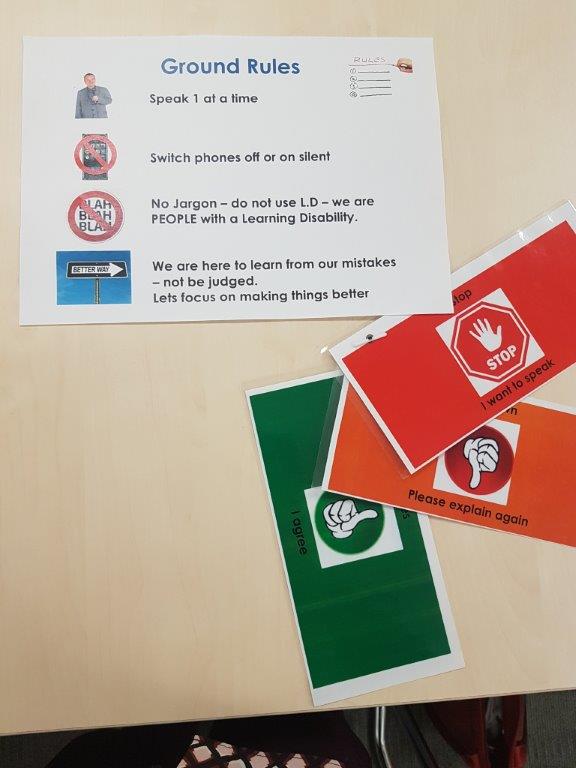
This is the text of a seminar delivered at St Johns Chambers in Bristol on March 21st 2018
Financial Remedies in Children Proceedings
1. What we will examine this evening are possible routes down which might enable you to get a financial remedy for a child who has suffered harm or loss. A typical example is a child who has been through care proceedings which have not been conducted well, or has been left drifting in section 20 accommodation without the local authority making any application to the court. There is evidence that the child has been harmed by this, possibly left traumatised and needing further therapeutic support, which a local authority may be reluctant to pay for. What are the options in such cases?
2. I will look at three possible avenues – the Criminal Injuries Compensation Board, actions in negligence and actions under the Human Rights Act 1998. Spoiler alert – I am going to conclude that when comparing negligence and the HRA it is the latter that is likely to be the remedy of choice. Asha will then take you through the ‘nuts and bolts’ of making such an application as the courts have now clarified the strict procedural requirements and the likely impact for the legally aided that the LAA will attempt to claw back costs.
General points
3. The law in these areas can be complicated. It is not difficult to understand why as they invariably involve payment of money. The only compensation possible in many cases is money – years of childhood cannot be restored.
4. Getting financial compensation may have to involve bringing legal action against people or agencies who did not directly cause the harm, because they have ‘deeper pockets’ i.e. greater access to money via department budgets or insurance schemes. Insurance companies are usually very keen to avoid paying out. Thus such cases are often fought very hard.
5. This has proved a particularly fraught arena when dealing with harm done to children or families by the actions or failure to act of a local authority. Harm is most likely to be caused by individuals such as social workers or foster carers who are unlikely to be rich enough to be worth suing as individuals. The focus then falls on the local authority and to what standards they could reasonably be held. But when local authorities are under a statutory duty to try and protect children, there are significant public policy arguments against imposing financial liabilities owing to fears that this may lead to defensive practices and unwillingness to work with families. It is also often difficult to establish causation when many different agencies and people contribute to decision making.
Criminal Injuries Compensation Board
6. The CICB deals with compensation claims from people who have been physically or mentally injured because they were the victim of a violent crime in England, Scotland or Wales. The Criminal Injuries Compensation Scheme 2012 sets out the critieria for eligibility and compensation rates. Annex B to the scheme confirms that a crime of violence includes a sexual assault. I won’t go into detail here but will just remind you of paragraph 9 (which I had overlooked):
A person may be eligible for an award under this Scheme whether or not the incident giving rise to the criminal injury to which their application relates has resulted in the conviction of an assailant in any part of the United Kingdom or elsewhere.
Negligence
7. In essence, to establish negligence you need to show that you were owed a ‘duty of care’ which was breached. In many cases the courts have refused to find that such a duty of care existed, relying on public policy grounds. However, those who argue against the refusal to extend liability point out that negligence is more than just ‘carelessness’ – it has to be behaviour that falls far below what you would expect from others in this field. Why shouldn’t children and families be protected from such serious failings?
8. The common law around negligence is continually evolving, reflecting the constant shifts in societal attitudes towards notions of vulnerability and harm. For example, we can see the clear evolution of the court’s willingness to find local authorities liable for harm caused to children by abusive foster carers. As recently as 2015 the Court of Appeal decided a local authority could not be held ‘vicariously liable’ for the actions of its foster carers; however, the decision was over-turned in part when the case reached the Supreme Court in Armes v Nottinghamshire County Council [2017] which decided that whilst there was not a non-delegable duty to take reasonable care, it was possible for such vicarious liability to exist.
9. I stress at the outset that negligence is a complicated area of law and I do not claim particular expertise. Anyone contemplating an action in negligence will need to get proper advice from a specialist practitioner. But I hope what follows can be a useful overview of some of the likely considerations, to at least help you decide if you do need to take that next step.
CN v Poole Borough Council
10. An interesting recent case that provides a framework for this discussion was the decision by the Court of Appeal on December 21st 2017; CN v Poole Borough Council [2017] EWCA civ 2185. This was reported at the time as a decision that prevented victims of abuse claiming compensation from local authorities, including victims of such scandals as Rotherham – see for example reports in The Times and the Daily Mirror on the 1st January 2018.
Facts of this case
11. A mother ‘Mrs N’ had two sons, CN (aged 9) and GN (aged 7). CN had serious disabilities, requiring a high level of care and supervision. In May 2006, the family moved into accommodation on a housing estate in Poole. The local authority arranged this as the local housing authority and the accommodation was rented from the Poole Housing Partnership Limited (“PHP”). Sadly, over the next few years, Mrs N and her sons were the victims of serious anti social behaviour from a neighbouring family. Mrs N reported this to various agencies – the police, the local authority and the PHP. She had to complain further to local politicians about the lack of effective response from these agencies. This led to the Home Office being involved who carried out an independent case review in 2010 that criticised the agencies’ responses. However, the anti social behaviour continued and the family were finally re-housed in December 2011.
Litigation from 2012
12. Litigation then commenced. In December 2012 the family claimed against the council, the police and the PHP alleging breach of the Human Rights Act 1998 and negligence. The essence of the claim was that all three agencies had failed to take appropriate steps to protect the family from abuse and this was a breach of their rights under Articles 3 and 8 of the ECHR. However, the family did not provide particular details of their claim, they asked more time to provide these details in August 2013, but in December 2013 that application was dismissed. A year later a second set of proceedings was issued and this time only the council was a defendant and the claim was now based solely in negligence (previous case law having established that no duty of care was owed by either the police or the housing departments in such circumstances).
13. A second claim was also made on behalf of the children that the council had failed to comply with its duties under the Children Act 1989 to safeguard them and promote their welfare. The local authority wanted the court to strike out that second claim as having no foundation in law. However, In October 2015 the court dismissed both elements of the family’s claim, finding that there was no basis to hold that a local authority owed a duty of care to protect against the anti social behaviour of others and that there was no legal foundation to hold that the Children Act 1989 created any additional duty of care with regard to the children.
14. The children then appealed with regard to the argument that a duty of care flowed from the local authority’s obligations under the Children Act. The court were reminded of the Court of Appeal decision in JD & Ors v East Berkshire Community Health & Ors [2003] EWCA Civ 1151 (31 July 2003) which found at para 87: where consideration is being given to whether the suspicion of child abuse justifies taking proceedings to remove a child from the parents, while a duty of care can be owed to the child, no common law duty of care is owed to the parents.
15. The claim then became about the local authority’s failure to remove the children from their mother. The appeal was heard in February 2016 and Slade J agreed that it was wrong to strike out the children’s claims based on the local authorities social services functions. The children’s case was then put on this basis, arguing that the local authority should be liable for the following failures:
- Failed to assess the ability of the Claimants’ mother to protect her children from the level of abuse and violence they were subjected to. The Defendant did not carry out any timely or competent risk assessment and such assessments as were carried out were flawed and delayed ….
- Failed to assess that the Claimants’ mother’s ability to protect the Claimants from abuse …. Further failed to assess that the mother was unable to meet the Claimants needs whilst she lived …. with them.
16. The council were then given permission to appeal and they succeeded. The Court of Appeal found the argument that the children should have been removed from their mother’s care as a means of dealing with anti social behaviour as “rather startling” and “highly artificial” (paragraph 41). In essence, the claim had nothing to do with any social services functions but was “in fact a criticism of the housing functions of the local authority” (paragraph 104).
17. The Court of Appeal in Poole considered at para 55 the implications of the earlier ruling in JD v East Berkshire that a duty of care could be owed to a child when considering the child’s removal from his parents: The Court was considering the decision whether to leave a child in a family where abuse was in question. For the purposes of such a decision there exists no true “third” party, in the usual sense. The actual or potential wrongdoing by those who would retain (or gain) custody of a child is central to the decision being taken. It is the mainspring of the relevant decision. That is a significant distinction from the current case.
18. There were two fundamental aspects to these proceedings which argued against making the council liable
- the danger of encouraging defensive decision-making; and
- the general absence of liability for the wrong-doing of others (paragraph 94). It is simply unfair for the local social services authority to be held liable, when the housing department, the landlord and the police could not. (paragraphs 95-98)
19. Although the court accepted that society placed a high emphasis on protecting vulnerable people, it was neither effective nor just to do so by singling out one agency of the State for tortious liability as against the others.
20. The Court of Appeal confirmed that the Court of Appeal decision in JD v East Berkshire relating to a possible duty of care to children when decisions were made about removing them from their parents, was inconsistent with the subsequent decisions of higher authority and should no longer be followed (paragraphs 99-101).
21. King LJ, an experienced family judge, was further critical of the argument that the courts would grant a care order in the circumstances of this case, re-stating the high threshold for the making of a care order with a plan for interim removal. Davis LJ stated that care proceedings to protect the children by removing them from their mother would have been “utterly heartless” and “utterly wrong” (paragraph 118).
22. There were suggestions that this might be going to the Supreme Court but so far I have not heard anything.
Consequences of this decision
23. It appears that the result of the CN judgments is that a common law claim in negligence for a negligent act or omission in a failure to investigate / failure to protect case before a care order will now fail; or at least will certainly be very hard fought by a local authority who will argue that any action in negligence against a Children’s Services Department is only now possible post a formal assumption of responsibility via a statutory decision to intervene.
24. This is a major judicial U-turn, which sets the law back 27 years by reinstating the largely discredited public policy reasons set out by Lord Browne-Wilkinson in X (Minors) v Bedfordshire CC [1995] 2 AC 633. Irwin LJ who delivered the main judgment has declared that the Court of Appeal decision in JD v East Berkshire [2004] QB 558 should no longer be followed. It was Lord Phillips in JD who declared that X (Beds) should not be followed as the policy objections said to point away from the imposition of a duty of care (defensiveness, resources, delicate and multi-disciplinary decision making to name but three) could not survive the Human Rights Act 1998 as local authorities were exposed to just those dangers under the Human Right Act.
Human Rights Act 1998
25. So if you are considering harm done to children because a care order was NOT made, it looks as if the only avenue will be that which flows from breach of the Human Rights Act 1998. For example, note the decision of the European Court in Z and Others v UK [2001]. This examined the refusal of the House of Lords in X v Bedfordshire in 1995 to find a duty of care existed to remove children from abusive home circumstances and thus denied them financial compensation for the significant harm they suffered. The European Court found the children’s Article 3 rights had been breached, so serious was the harm they suffered, and awarded damages.
26. These cases need very careful consideration about the legal mechanism identified for bringing a claim. Bringing a claim in negligence has different requirements than bringing a claim under the Human Rights Act.
27. Recent case law has also made an application under the HRA less attractive, as Asha will explain. I will give just a general overview here. First thing to note is that it seems unlikely that you will be making much reference to Article 3, which protects against torture and inhuman treatment. Much more likely is a claim under Article 8 whereby you argue that a local authority did not show sufficient or any respect to the child’s and family’s right to a family life, or Article 6 when you argue that the proceedings were not fair. This can be clearly shown in any section 20 ‘drift’ case, particularly if this narrows the eventual options for the child’s permanence.
28. Also you need to be alert at the outset to the operation of the statutory charge on any damages awarded if you are acting under a publicly funded certificate.
The Basics
29. The Human Rights Act (HRA) was passed to give direct effect to the Articles of the European Convention into domestic law. Prior to the HRA, if you wanted to claim that your human rights had been breached you had to take out an action in the European Court of Human Rights in Strasbourg. Now, it is unlawful for any public body – including the courts and local authorities – to act in a way which is incompatible with a Convention right, unless they have no choice because they have to obey current statute law.
30. However, applicants who are receiving legal aid will need to consider carefully the implications of the statutory charge on any award of damages – this is discussed below. It seems likely that in most cases, pursuing an HRA application is simply not commercially viable. However, there are some avenues worth exploring and these are discussed below.
What is an unlawful act and what is a public authority?
31. ‘Unlawful Act’ is defined under section 6 (1) of the HRA. It is unlawful for a public authority to act in a way incompatible with a ECHR right UNLESS it doesn’t have a choice because of the way the domestic law is written.
32. A ‘public authority’ includes a court/tribunal or any person who carries out functions of a ‘public nature’ BUT it excludes the Houses of Parliament.
Who can make an application under the HRA?
33. Section 7 provides that a person can bring proceedings if they are, or would be a ‘victim’ of the unlawful act. There is a distinction between a ‘free standing’ application [section 7(1)(a)] and relying on your Convention rights in existing proceedings [section 7(1)(b)].
34. It is now clear that the court will expect formal applications made according to the Civil Procedure Rules NOT the FPR and this will have consequences for many issues, not least the role of the children’s guardian. For a clear analysis of the necessary procedural requirements, it is worth reading carefully the judgment of Cobb J in SW & TW (Children : Human Rights Claim: Procedure) (Rev 1) [2017] EWHC 450 (Fam) (08 March 2017). Asha will cover this in more detail. The biggest shock to those of us who enjoyed a few years of free standing applications made by Guardians was that the court pointed out this isn’t actually lawful under section Section 12 of the Criminal Justice and Court Services Act 2000 –cannot be authorised to act as litigation friends to child claimants although they may give advice about the appropriateness of a child making a HRA 1998 claim.
35. The full costs regime in Part 44 CPR 1998 also applies, including (in contrast to the position in family proceedings) the general rule that ‘costs follow the event’ (CPR, Part 44.2(2)(a): “(a) the general rule is that the unsuccessful party will be ordered to pay the costs of the successful party”; see also CZ v Kirklees MBC [2017] EWFC 11 at [61]));
What remedy can you get?
36. Section 8 of the HRA gives the court a discretion to remedy the breach of your human rights; the remedy must be ‘just and appropriate’.
37. This can include damages, if the court is satisfied this is necessary ‘to afford just satisfaction’. The court must take into account the principles applied by the European Court about awards of damages – but the problem with this is that the jurisprudence from the ECtHR is deliberately opaque about what makes the quantum of damages ‘just satisfaction’. Each case will depend on its own facts.
Article 41 of the ECHR
38. This sets out the requirement for ‘just satisfaction’ on violation of a ECHR right. For useful discussion about the application of Article 41, see paragraph 143 onwards of the judgment of the European Court in the case of P, C and S v UK [2002].
39. A clear causal link must be established between the damage claimed and the violation alleged. The Court will not be satisfied by a merely tenuous connection between the alleged violation and the damage, nor by mere speculation as to what might have been.
40. Compensation for damage can be awarded in so far as the damage is the result of a violation found. No award can be made for damage caused by events or situations that have not been found to constitute a violation of the Convention, or for damage related to complaints declared inadmissible at an earlier stage of the proceedings.
41. The purpose of the Court’s award in respect of damage is to compensate the applicant for the actual harmful consequences of a violation. It is not intended to punish the Contracting State responsible. The Court has therefore, until now, considered it inappropriate to accept claims for damages with labels such as “punitive”, “aggravated” or “exemplary”.
How have the courts approached damages under the HRA 1998?
42. The first case to consider damages under the HRA 1998 was Anufrijeva v London Borough of Southwark in 2003. At para 49 the court noted the conclusions of the Law Commission in its report on Damages under the Human Rights Act 1998 which suggested that the obvious analogy for a claim for damages under the HRA is a claim against a public authority in tort, such as negligence. But this analogy cannot be drawn too strictly as there are distinctions between the purpose behind an award of damages in tort and under the HRA.
a) damages are recoverable ‘as of right’ in a negligence claim (tort), but are at the court’s discretion in a HRA claim;
b) the purpose behind the damages claim is different; in negligence this is to put the claimant back in the position he would have been in without the negligent act, whereas in HRA claims the purpose is to provide ‘just satisfaction’;
c) That ‘just satisfaction’ may be provided by dealing with the HR breach, not necessarily compensating someone with money. The European Court has often found that in cases where there was a procedural, rather than substantive breach, a simple declaration that the claimant’s human rights were breached is in fact sufficient ‘just satisfaction’.
43. In the case of H (A Child – Breach of Convention Rights: Damages) [2014] the court was very clear that in the circumstances of this case ‘just satisfaction’ would NOT be achieved by a simple declaration that the parents’ rights had been breached. See paragraph 82.
It was not until June 2014 that these parents eventually managed to secure the return of their daughter to their care, exactly a year after she was placed with Mr and Mrs B. Whilst it is true that during that year the parents were having regular contact, supervised contact at a local authority contact centre is far removed from the joys of fulltime, unsupervised care of one’s own child. The residential assessment which began in June 2014 could have begun a year earlier. The cognitive assessment of the parents, not finally obtained until May 2014, could have been obtained months earlier. Unlike the parents in the Coventry case, these parents’ have suffered a loss of time with their daughter which was both unnecessarily lengthy and deeply distressing.
How should damages be assessed? And what is an appropriate award?
44. The difficulty is in situations where the harm suffered by the claimant is not one that can easily be measured in money – for example, loss of earnings is a lot easier to measure than being very upset or anxious about something. There is little guidance from the European authorities, save that the court tends to look at the nature and seriousness of the breach complained about, and the claimant’s own behaviour.
45. The European Court has also recognised ‘loss of relationship’ as another form of intangible injury – that is the loss of love and companionship which occurs when a family relationship is disrupted by breach of Article 8.
46. This is a clear difference between the kinds of damages that may be awarded for breach of contract or tort in the domestic courts, which may not recognise many of these types of loss or would require much stricter proof to be satisfied they had occurred. Some types of loss are going to be much more easily quantified than others.
47. The court in H (A Child) noted that there was not much assistance from previous cases in determining what amount should be awarded. In this case, each parent was awarded £6,000. See para 87:
48. Whilst the authorities referred to are of some small assistance, there are too few to be able to be confident that they indicate the broad parameters for making an assessment. In any event, it must, of course, be remembered that every case is different. Every case turns on its own facts. The assessment of damages in these cases is highly fact sensitive.
49. The court in X, Y. & Z re (Damages: Inordinate delay in issuing proceedings) [2016] approved the identification of the relevant issues by HHJ Lazarus in the Medway case [2015]:
a) The length of the proceedings
b) The length of the breach
c) The severity of the breach
d) Distress caused
e) Insufficient involvement of the parent or child in the decision making process
f) Other procedural failures.
50. WARNING: It is likely that the Court of Appeal decision in London Borough of Hackney v Williams & Anor [2017] is a clear attempt to row back from what appears to be ever increasing amounts awarded in damages for HRA claims. The Court decided that there had been no breach in this case so no damages fell to be awarded – BUT if they had, the Court of Appeal were clear that the £10K awarded at first instance was simply too high.
Damages awarded in other cases
51. P, C, S v the UK [2002] the European court awarded each parent €12,000 for breaches of their Article 8 and 6 rights in a case which involved removal of a baby at birth. This case also has some useful commentary as to how damages should be assessed.
52. Northamptonshire CC v AS [2015] – damages £16K.
53. Ferrari v Romania in the European Court of Human Rights in April 2015 where a father was awarded €7,500 after the state failed to properly engage with Hague Convention proceedings and caused delay.
54. In re A (A Child) in August 2015, the mother was awarded £3,000 for unlawful removal of her child.
55. Medway Council v M and T October [2015] awarded £20K to both mother and child for unlawful use of section 20 accommodation under Children Act 1989.
56. B (A Child) [2016] EWFC B10 January 2016 – £5K awarded for 3 year delay in revoking placement order that meant B lost out on developing a relationship with his siblings.
57. Case Soares de Melo c. Portugal (Application No 72850/14) [Feb 2016] award of €15,000 for decision to have children adopted without offering family sufficient support.
58. X, Y & Z re (Damages: Inordinate Delay in Issuing Proceedings) [2016] EWFC B44 (23 February 2016) – £45K awarded, (£20K for each child and £5K for the mother) highest level of damages known to date for misuse of section 20, and particular criticism of the failure of two IROs to act.
59. BB (A Child) [2016] 27th June EWFC B53 £7,500 awarded for misuse of section 20.
60. GD & BD (Children) [2016] 10-18 October 2016 EWCH 3312 – example of very poor police, LA and legal practice, described by Suesspiciousminds as ‘the worst case of the year’. £10,000 awarded to the mother and £5,000 to each child.
61. London Borough of Hackney v Williams and Anor [2017] – Court of Appeal sound the warning that £10K awarded at first instance was too high (in the event the court did not find a breach of statutory duty so no damages were awarded at all)
62. CZ (Human Rights Claim: Costs) [2017] EWFC 11 – £3,750 to each parent and child for unjustified removal at birth for about 3 weeks. However, costs likely to be completely absorbed by the statutory charge – publicly funded costs in region of £100K.







